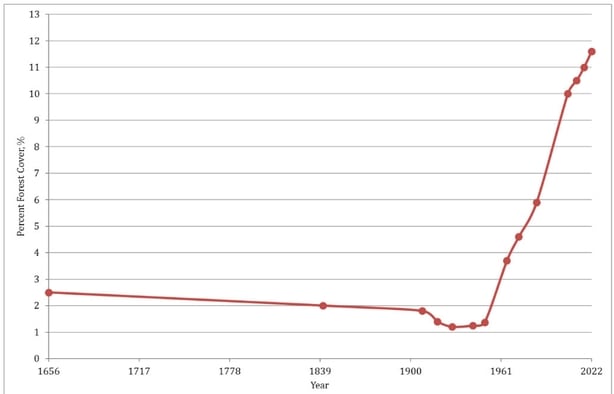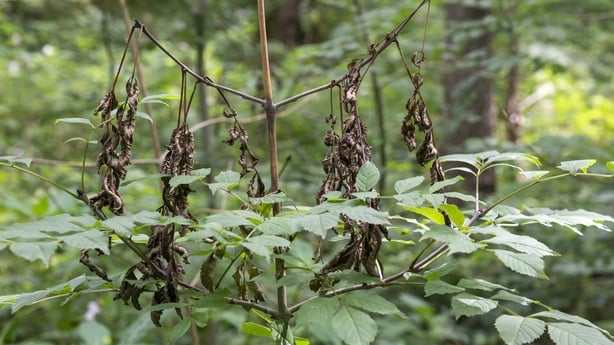Leitrim is the most heavily forested county, according to the latest Forestry Statistics Ireland report.
It found that the county has a total of 20.1% or 32,000 hectares of its land under forestry.
The report also found that Wicklow and Clare respectively have 18.5% and 18% of land under forestry.
At the other end of the scale, Co Louth has just 2.9% of land under forestry.
The county with the most land planted with trees is Cork with 92,0000 hectares.
The report, published annually by the Department of Agriculture, also found 11.6% of the country is now under trees, up from 1.4% at the foundation of the State.
However, Ireland is lagging behind the average for forestry in other EU member states which currently stands at 38.3%.

The report found farmers accounted for 82% of all private lands afforested between 1980 and 2022 and since the introduction of agri-environmental schemes in 1994, 660km of new hedgerows have been planted and 3.7 million trees planted on non-forestry lands.
The most popular tree species in the State is Sitka spruce, which is grown commercially to produce timber products.
Around 44% of the forested area consists of Sitka spruce. Conifers make up 69% of national forest cover and broadleaves account for 30%.
Last year, just 2,272 hectares of forestry were planted, which is far below the Government's climate action target of planting 8,000 hectares per annum with a view to increasing total forestry cover to 18% by 2050.
So far this year, only 1,400 hectares have been planted.
Minister for State with Responsibility for Forestry Pippa Hackett said planting rates last year were too low.
She said: "While these new forests planted in 2022 will ultimately form a valuable part of our national forest estate and will play an important role in sequestering carbon, providing timber and creating new habitats, last year's level of planting is far below where we ultimately need to be."
Ms Hackett said the new €1.3bn forestry programme, recently approved by the European Commission will be a turning point for the forestry sector.
She said: "I believe that the programme will unlock the potential for the sector to get back to planting 8,000 hectares per annum and more.
"One of the trends we can see from this report is that in the years that most recently exceeded the 8,000-hectare target, farmers were planting the vast majority of new forests in Ireland.
"The supports we have put in place for farmers in the new Forestry Programme, with 20 years of payments at rates increased by between 44% and 66%, will reignite forestry as a real option to be incorporated as part of the farm enterprise, and provide the platform for the forestry sector to work with farmers to plant the full range of forest types on offer in this programme."
However, many in the forestry industry remain frustrated and disillusioned about how the sector is being handled.
Chairman of the Social, Economic and Environmental Forestry Association (SEEFA) Teige Ryan said there are a number of impediments to revitalising the sector.
Mr Ryan said: "This year there have been around 1,400 hectares planted and after the planting season resumes in November, we will get to around 2,000 hectares for the year.

"Delays in issuing planting licences are affecting things badly, and that was compounded by the delay in improving the new forestry programme."
He said there are a huge number of impediments in the new programme that will affect planting, that have yet to be explained, but licensing is still the biggest challenge.
Mr Ryan added: "The licensing issue has been going on for six years. The problem is applications can be submitted but you have no idea when you will get the licence.
"The Department need to make a solid commitment on how long it will take to get a licence. The heartbeat of the whole thing is farmers and they need to know licences can be issued."
The SEEFA chairman also said there is no proper ash dieback scheme to help farmers who have lost ash plantations to the disease.
An independent review of the Department of Agriculture's existing dieback scheme was announced back in June and is currently under way.







